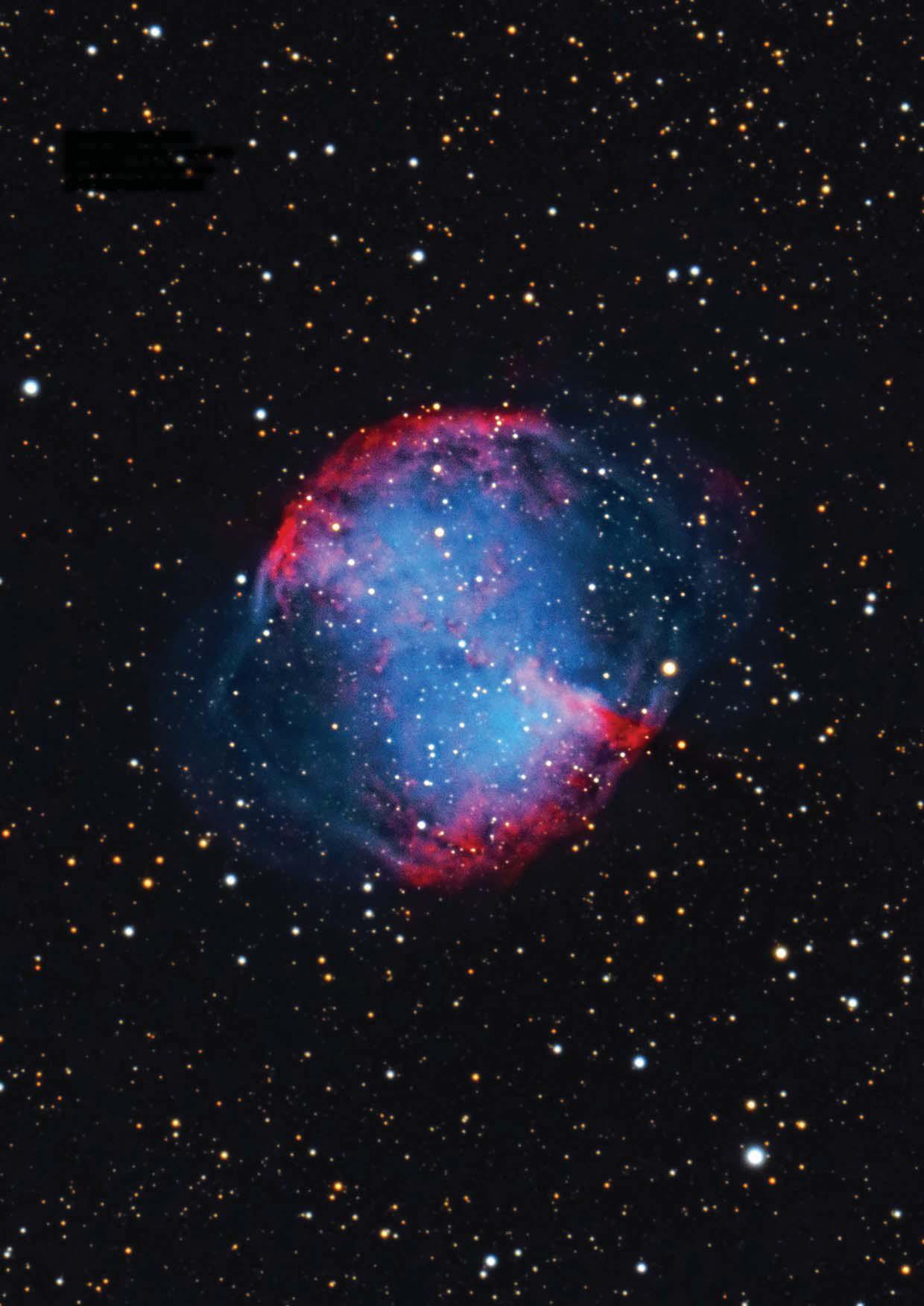
One of the most fascinating facts I ever learned about astronomy is that stars don't last forever: like us, they are born, live a life and eventually die. Okay, so those lives are rather longer than ours, but every single star in the sky is on borrowed time.
Thanks to science fiction, a common misconception is that all stars die in cataclysmic explosions, like the Death Star. The largest do, becoming supernovae that can briefly outshine a whole galaxy, while the smallest ones just shrink and fade away, like forgotten pop stars. In between, the quieter, less attention-seeking stars the size of our own Sun - that is, with diameters of a million kilometres or so - die like celestial souffles, swelling up and then shrinking again; but not before they pop, puff off their outer layers like colourful smoke rings and surround themselves with beautiful shells of gas and dust. Because through the eyepiece these shells have a resemblance to planets, they are known as planetary nebulae'.
Planetary nebulae are important scientifically because they allow us to study the evolutionary processes of stars similar to our own Sun, and see into its future. By studying them at different wavelengths, we can explore the amount and composition of the dust and gas inside their shells, allowing us to understand better what stars are made of. It's even possible to watch the material inside a planetary nebula's shells expanding, by taking multiple images over long periods of time and comparing them. We won't be around to see what happens to the Sun as it nears the end of its life, but studying planetary nebulae allows us to jump in a TARDIS and travel into the future to do just that.
Keep it dark
この記事は BBC Sky at Night Magazine の August 2022 版に掲載されています。
7 日間の Magzter GOLD 無料トライアルを開始して、何千もの厳選されたプレミアム ストーリー、9,000 以上の雑誌や新聞にアクセスしてください。
すでに購読者です ? サインイン
この記事は BBC Sky at Night Magazine の August 2022 版に掲載されています。
7 日間の Magzter GOLD 無料トライアルを開始して、何千もの厳選されたプレミアム ストーリー、9,000 以上の雑誌や新聞にアクセスしてください。
すでに購読者です? サインイン

Could We Find Aliens by Looking for Their Solar Panels?- Designed to reflect ultraviolet and infrared, the panels have a unique fingerprint
Researchers searching for life beyond Earth spend a lot of time thinking about what telltale signs might be detectable astronomically. Forms of unambiguous evidence for the presence of life on another world are known as biosignatures. By extension, techno signatures are indicators of activity by intelligent, civilisation-building life.

Antimatter- In our continuing series, Govert Schilling looks at antimatter, the strange counterpart to most of the matter filling our Universe
Particles and corresponding antiparticles are very much alike, except they have opposite electrical charges. For instance, the antiparticle of the electron - known as the positron - has the same tiny mass, but while electrons carry a negative electrical charge, positrons are positively charged.

Where Have All The Milky Way's Early Stars Gone?- Our Galaxy has a curious lack of pristine stars
The Big Bang produced a Universe filled almost exclusively with hydrogen and helium; all other elements - what astronomers call metals - were produced by stars, supernovae and everything that happens later. So if you can pick out a pristine star with no metals polluting it from among the billions in the Milky Way, then you are likely to have a star dating from our Galaxy's earliest days.

Inside The Sky At Night - Two years ago, exoplanet scientist Hannah Wakeford received some of the first data from the JWST
Two years ago, exoplanet scientist Hannah Wakeford received some of the first data from the JWST. In July's Sky at Night, we discovered what she's learned since then.

How to stack DSLR data in Siril
Easily combine multiple frames to boost detailin your astro photos

Lunar occultation of Saturn
You'll need to strike a balance on 21 August to capture the Moon covering the ringed planet

How to plot a variable star light curve
A rewarding project to chart stars that change brightness

Smartphone photography with a telescope
Mary Mcintyre explains how to get impressive night-sky images using your phone

Once-a-century solar storm is overdue
If a Carrington Event struck today it would be catastrophic, says Minna Palmroth

The new era of human spaceflight
There's been a step-change in crewed space missions since the dawn of the 21st century. Ben Evans charts its course and looks ahead to future horizons